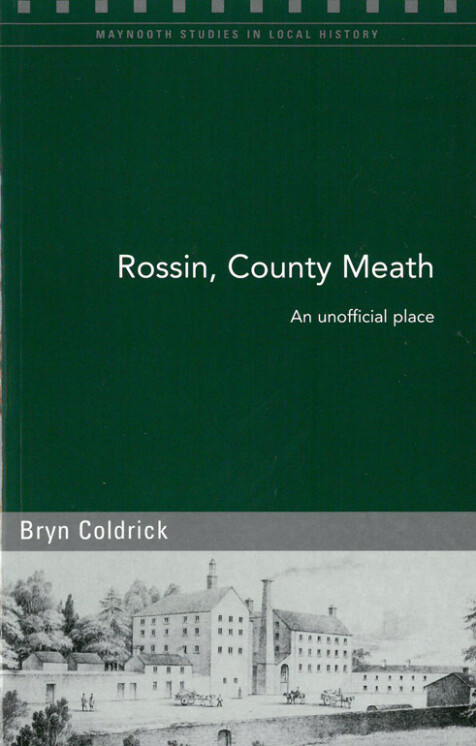Rossin, County Meath
An unofficial place
Bryn Coldrick
The area known as Rossin is found on few maps. Instead of being an artificial creation of political or religious administration, it is an unofficial entity which originated and developed as a group of people living in close proximity to one another. Against a mainly rural backdrop, Rossin is identifiable as a concentrated settlement overlapping three townlands and two parishes and has long enjoyed the facilities found in an officially recognized village, including a shop, a public house, a chapel, a school, and, most strikingly, a commanding Georgian-style flour mill.
Following an investigation of the origin of the community and its name, this work traces the development of Rossin from the eighteenth century, when it formed part of the only Irish lands of the benevolent absentee landlord, the earl of Sheffield, into the nineteenth-century when its flour mill was founded. During the first half of that century, Rossin was developing and growing into what could be described as a proto-village. However, in a story common to many communities in Ireland, the Great Famine and post-Famine conditions took their toll on Rossin, freezing its development and causing decline, not only to its great mill but also to the community of which it was a part.
Originally from Dunmore, outside Navan, Bryn Coldrick has been living in Rossin since 1998 and is currently employed as an archaeological consultant specializing in environmental impact assessment and the compilation of local histories.

